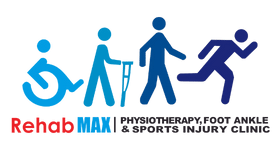An understanding of Running Injury treatment becomes very important if you pursue running for fitness or as a competitive sport. Running is a great form of exercise, recreation, and sport for adults as well as children. Naturally, it has gained popularity and has become one of the most preferred fitness activities among urban Indian population.
If you are running then it is important for you to recognize early warning signs of an injury, know to prevent it and also learn to differentiate a serious injury from a minor one. Sports physiotherapists from ReLiva Physiotherapy cover in this article, what care should be taken to treat the running injuries to ensure complete and earliest possible recovery.
First things first. We do hope you are taking adequate care to avoid running injuries with these five tips for an injury free run.
What to do if you are injured while running?
In case you did injure yourself while running, follow these steps:
- If you are injured, try to fix it as soon as you can. Follow the RICE protocol in order to do so. Ice the affected area for 15-20 minutes several times per day.
- Learn how to best follow the protocol, click and read about RICE Protocol
- Elevate injured part while icing
- Rest, at least initially
- Analyze training / running program for possible causes. Question yourself for the following:
- What did I do differently in training?
- Did I just have a big jump in the speed of running?
- Was there a significant increase in pace?
- Are my shoes worn out? Or is there a change in the shoe model?
- Was there a change from all treadmill or soft surface to road running?
- Cross-train on non-impact cardio – Follow similar timing that you were earlier doing for running/walking. You could use an elliptical or take up swimming or cycling.
- Determine a plan to return to the full program, return to running very slowly. It is best to consult a physiotherapist to plan your gradual return into the running routine.
- Consult a physiotherapist and/or orthopedic if the pain persists.
How do you treat a running injury?
If you have had a running injury, it should be treated as per the following plan of care:
Week 1:
Week 1 should always be the period of most care resting and understanding what caused the injury in the first place. Follow RICE protocol for pain relief and recovery of the affected area.
Week2:
After doing all of these for a week, if your pain subsides, do the following:
- Reduce your training distance or time by half. (refer above for specifics on re-training)
- Avoid running on successive days as long as you can run pain-free.
- Stretch and wear supportive shoes.
- Ice the injured area for 15 to 20 minutes, two to three times per day, or just right after running if you feel any pain after a run.
- If none of these works, you will have to meet with a doctor or a physiotherapist for the same.
What is the best treatment for a running injury?
Prevention is better than cure. However, despite the best of your effort, you did manage to get injured, it is most crucial to follow rest and Ice (RICE protocol) immediately after injury.
Then the next most important step is to gradually retrain the injured part to ease back into running while maintaining the strength and ability of other body muscles while the injury recovers.
Physiotherapy is a combination of rehabilitative activities and exercises designed to reduce pain and recover from injury. This makes it the best treatment for recovering from a running injury.
Even if your doctor has given you the green light to continue running, but you’ve had other injuries before or keep getting the same injury, then too you should consider making an appointment with a physiotherapist. Even a few sessions might help you. Physiotherapists can show you some exercises that will strengthen weak parts.

How does Physiotherapy help in treatment of running injuries?
Since many runners suffer from running injuries, taking measures to limit the associated risks is an important element of a runner’s routine for pain-free activity. Your physiotherapist is an excellent source of guidance and information on avoiding running injuries and enhancing your performance on the road and tracks.
When you visit the physiotherapist, he/she will first try to determine what caused the injury in the first place including the following:
- Your running biomechanics
- Your footwear
- Your training load
- Your joint range, muscle length, and overall flexibility
- Your muscle strength and muscle control
- Once your physio has identified the factors that have led to your running injury, he/she will look to work with you to get you back into running as soon as possible. A physiotherapist who specializes in running injuries is the best person to advise you.
Should I run through pain?
You might be able to push through the pain, but it might get worse and possibly keep you out for a longer period of time.
If you continue to run while injured, you might be causing injuries elsewhere. You might even be altering your gait subtly and who knows if that will cause another injury later.
Think hard – What is more important? What is the bigger goal? Stop running at the onset of injury so you don’t have to take a much longer period off.
Will running with Plantar Fasciitis make it worse?
If you are a long-distance runner or athlete, you may be at an increased risk of developing pain in the heel due to Plantar Fasciitis. It is very important to catch and treat plantar fasciitis quickly.
Fortunately, if you take care of it, you can usually treat it and be back running with 3-7 days. Within two weeks, you should be back to your normal training.
Physiotherapy helps in dealing with the symptoms of plantar fasciitis like pain, stiffness, and inflammation. Read here to understand more about Plantar Fasciitis and its treatment.
What are the tips for an injured runner?
Here are a few tips for the injured runner including the Dos and Don’ts that best summarise our advice for them:
- Do rest
- Do seek professional help
- Do try physiotherapy
- Do get more sleep (sleep is when our body repairs itself)
- Do cross-train
- Don’t push through it: even though you may be able to push through and you should choose to rest immediately after having pain. This way, you might be able to cut your recovery period in half.
- Do a gait analysis: if you’re a serious runner, and running means a lot to you, it’s a good idea to have someone evaluate your form and do a gait analysis.
- Don’t compare yourself to anyone else
- Do adjust your goals and expectations
How long does it take to recover from a running injury?
The expected time to recover from a running injury will depend upon the cause, location, and extent of the injury. Average healing time: Hamstring injuries can take anywhere between 3 – 6 months to heal. On occasion, it can even take up to 12 months to heal. A minor strain or ankle sprain may take even sooner to heal.
Whether you happened to injure yourself by accident or by overtraining, do not lose heart. If you reach out to a trained physiotherapist soon enough after the injury, the chances are that you can recover much faster and get back to your training than if you just sit back and wait for it to heal itself.
RehabMax Physiotherapy helps develop an overall treatment plan for sports injuries as well as rehabilitation care for reconstruction surgery.



![Disc Prolapse [PIVD]](https://rehabmaxclinic.com/wp-content/uploads/2021/09/Orthopedic-Physiotherapy.png)